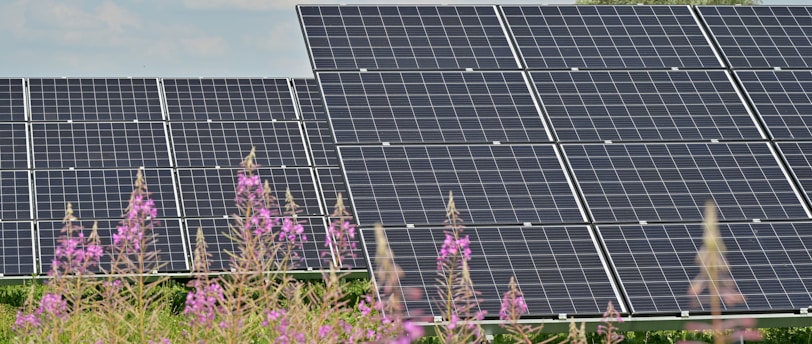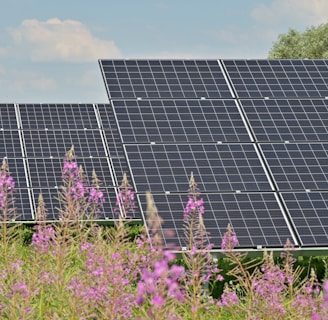Solar Panels. Styles, and best value efficiency
There are several options to choose from when thinking about Solar panels. Here are few advantages and disadvantages to consider.
5/17/20243 min read


Exploring Solar Panels: Varieties, Differences, and Efficiency
Solar panels have become a popular solution for harnessing renewable energy, offering a sustainable way to generate electricity for homes and businesses. With advancements in technology, several types of solar panels are available, each with unique characteristics and efficiencies. Let’s explore the different varieties of solar panels, their differences, and identify the most efficient form of solar panel available today.
Types of Solar Panels
1. Monocrystalline Solar Panels
Monocrystalline solar panels, also known as single-crystal panels, are made from a single continuous silicon crystal. These panels are easily recognizable by their uniform dark appearance and rounded edges.
Advantages
High Efficiency: Typically, monocrystalline panels have efficiencies ranging from 17% to 22%, making them one of the most efficient types available.
Longevity: They have a long lifespan, often backed by warranties of 25 years or more.
Space Efficiency: Due to their high efficiency, they require less space compared to other types for the same power output.
Disadvantages
Cost: They are more expensive to produce, leading to higher upfront costs.
Performance in Shade: Like most panels, their performance drops significantly when partially shaded.
2. Polycrystalline Solar Panels
Polycrystalline, or multicrystalline, solar panels are made from silicon crystals that are melted together. They have a bluish hue and a less uniform appearance compared to monocrystalline panels.
Advantages
Lower Cost: The manufacturing process is simpler and cheaper, resulting in lower prices for consumers.
Good Efficiency: While slightly less efficient than monocrystalline panels, they still offer efficiencies between 15% and 17%.
Disadvantages
Lower Efficiency: They are less efficient than monocrystalline panels, requiring more space for the same output.
Temperature Sensitivity: Their performance can degrade more in high temperatures.
3.Thin-Film Solar Panels
Thin-film solar panels are made by depositing one or more layers of photovoltaic material onto a substrate. The main types of thin-film panels include cadmium telluride (CdTe), amorphous silicon (a-Si), and copper indium gallium selenide (CIGS).
Advantages
Flexibility: They can be made flexible, allowing for a variety of applications, including curved surfaces.
Performance in Low Light: They perform better in low-light conditions and are less affected by high temperatures.
Aesthetic Appeal: Their uniform appearance can be more aesthetically pleasing, especially in integrated applications.
Disadvantages:
Lower Efficiency: Typically, they have lower efficiencies (around 10% to 12%) compared to crystalline panels.
Lifespan: They generally have shorter lifespans and come with shorter warranties.
4. Bifacial Solar Panels
Bifacial solar panels can capture light from both the front and back sides. They are usually made from monocrystalline cells.
Advantages
Increased Efficiency: They can increase energy yield by capturing reflected light from surfaces beneath the panel.
Durability: Often built with glass on both sides, they are highly durable.
Disadvantages
Installation Complexity: Requires careful installation to maximize rear-side exposure to light.
Cost: Higher initial costs due to more complex manufacturing processes.
Most Efficient Solar Panels
As of now, the most efficient commercially available solar panels are monocrystalline panels, particularly those incorporating Passivated Emitter and Rear Cell (PERC) technology. Some manufacturers have achieved efficiencies over 22% with these advanced monocrystalline panels. PERC technology enhances efficiency by reflecting unabsorbed light back into the cell for a second absorption attempt, reducing electron recombination, and improving overall energy capture.
Choosing the right solar panel depends on various factors including budget, space, and specific energy needs. Monocrystalline panels are currently the most efficient option, ideal for those with limited space and a higher budget. Polycrystalline panels offer a cost-effective alternative with decent efficiency, while thin-film panels provide flexibility and better performance in diverse conditions but at lower efficiencies. Bifacial panels present an innovative solution for maximizing energy capture in suitable installations. As solar technology continues to evolve, we can expect further improvements in efficiency and cost-effectiveness, making solar energy an even more attractive option for sustainable power
